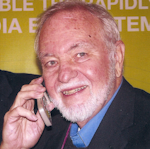A fieldbus is an industrial network designed specifically for real-time monitoring and control. A fieldbus generally defines a physical layer and a data protocol that’s usable with a wide range of devices like sensors, actuators, programmable logic controllers (PLCs), and proportional integral differential (PID) controllers.
Fieldbuses—low-speed, generally short-distance networking systems—are optimized for very specific applications. They were developed as a way to bring digital data communications to industry. Most early monitor and control systems used analog techniques to measure and control devices remotely. The 4- to 20-mA current-loop systems worked well; in fact, many are still in use today.
However, each link to a device requires its own specific wiring. With the increase in the number of sensors and controlled devices, it made sense to create a digital network that could replace the 4- to 20-mA analog loops. What resulted was the creation of many different fieldbuses, each unique to the specific equipment manufacturer and totally interoperable with any other fieldbus. Such proprietary systems worked well but were expensive and they locked a customer into the specific manufacturer.
What has followed over the years is a multitude of efforts to standardize on just a few fieldbuses. The goal was to provide some interoperability as well as some standardization that could lower costs and provide multiple vendor sources. Those efforts have included the creation of Ethernet-compatible fieldbuses.
Dozens of different fieldbuses exist around the world. Over the years, a few have emerged as the most widely used. Less frequently used fieldbuses are still sold and maintained, though. There’s not enough space to cover them all, but the following is a non-comprehensive listing of the most popular. Most of these integrate a simple twisted-pair wiring conforming to the popular serial interface standards like RS-232, RS-422, and RS-485. All operate from low-voltage dc sources such as 24-V power supplies, and some even use the network wiring to distribute dc power.
• AS Interface—Actuator Sensor Interface (ASi): ASi uses a two-wire bus up to 100 m in a bus, ring, or star topology to carry data. There’s also 24-V dc distributed over the cable.
• Bit-Bus: The Bit-Bus implements RS-485 twisted pair in a differential network that can achieve 62.5 kbits/s, 375 kbits/s, or 1.5 Mbits/s. It’s used mainly to connect PLCs.
• CANopen: This fieldbus for industrial control and monitoring uses the CAN Bus. The Controller Area Network (CAN) was developed for use in vehicle wiring, but has found wide acceptance as an industrial bus because of its simple protocol and interface.
• ControlNet: Allen Bradley developed this coax bus for time-critical applications. It achieves 5 Mbits/s up to 250 meters.
• DeviceNet: This fieldbus uses the CAN bus protocol but not the PHY. Data rates are 125, 250, and 500 kbits/s up to 500 m. It can accommodate 64 devices on the bus, and 24-V dc is distributed as well.
• Foundation Fieldbus: One of the more popular standards, its common data rate is designated H1 and runs at 31.5 kbits/s on twisted pair up to 1900 m. It can also run on 100-Mbit/s Ethernet, where it’s called Foundation Fieldbus HSE for high-speed Ethernet.
• HART—Highway Addressable Remote Transducer: One of the original 4- to 20-mA links, it now uses frequency shift keying (FSK) to transmit data at 1200 bits/s. The protocol frame is flexible, allowing it to work with all sorts of sensors and controllers. A wireless version is now available.
• LonWorks: This local operating network works over several different media, including RS-485 twisted pair, coax, fiber optics, or the ac power line. A wireless version is also available. Data rates of 78 kbits/s or 1.25 Mbits/s are common. Power-line data rate is 10 kbits/s.
• M-bus—Metering bus: M-bus is used mainly to read remote meters and sensors.
• Modbus: One of the oldest and most widely used protocols, Modbus is dominant in the U.S. Developed by MODICON for its equipment, the frame protocol has been adopted for other uses and works with Ethernet. It utilizes almost any physical layer like RS-232, RS-422, or RS-485.
• ProfiBus: Another very popular fieldbus, especially in Europe, ProfiBus implements shielded twisted pair or optical fiber. Speeds range from 9.6 kbits/s to 12 Mbits/s at distances from 100 to 1200 m. Different versions are available for process control or factory automation.
• SERCOS: This serial real-time communications system is designed for digital motion control. It connects motion controllers, drives, I/Os, sensors, and actuators for numerically controlled machines and systems.
Incidentally, all of the fieldbuses are deterministic and handle real-time feedback and control in a timely manner.

